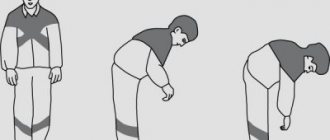Fear, anger, anxiety, panic and worry are accompanied by muscle tension, and if it is removed, you can influence the emotional state, that is, achieve calm.
Fear, anger, anxiety, panic and worry are accompanied by muscle tension, and if it is removed, you can influence the emotional state, that is, achieve calm.
This relationship was discovered by the American scientist and physician Edmund Jacobson in his research in 1922. He studied the expression of emotions in his patients. One of the ways to assess the emotional state was to measure muscle tension tone. As a result, he received confirmation of the connection between emotional and physical stress.
Jacobson has proven that muscle relaxation helps relieve the nervous system from being agitated, helping it to rest and restore balance. Based on this fact, Jacobson developed a simple and effective technique called Progressive Muscle Relaxation.
Thanks to her, he helped his patients get rid of neuromuscular tension, as well as cope with various diseases, such as insomnia, stuttering, and depression. Edmund Jacobson published the results of his work in 1929 in the book “Progressive Relaxation” and continued to improve it until 1948.
The Jacobson method of progressive muscle relaxation has gained wide popularity and is actively used by psychotherapists all over the world.
Who is the Jacobson relaxation technique suitable for?
- People suffering from any anxiety disorders. For example, if you are afraid of flying on an airplane, try using a relaxation technique right at the airport before boarding. It will help relieve a panic attack and you will feel that you can cope with your anxious state.
- People suffering from social phobias. For example, if you are afraid of public speaking, and you have to give a report on your work in front of colleagues, using relaxation techniques immediately before the event can have a good calming effect - and you will appear less stressed in front of the audience.
- To all people to relieve background tension. For example, if you work all day without raising your head, solving complex problems, and in the evening you come home nervous and take out your anger on your loved ones, regular use of relaxation techniques (3-5 times during the working day) will allow you to relieve stress rather than accumulate it .
- To all people to overcome anxiety. Even if you do not suffer from anxiety disorders, if you sometimes experience situations that cause anxiety, feeling nervous is a natural reaction. However, using relaxation techniques will help you calm down at the right time.
Andrey Dirar, psychotherapist:
“Jacobson came up with a wonderful, very good technique. It does not require knowledge of a large amount of information and a deep understanding of the problem. This technique will help relieve tension and remove negative emotions at the moment you experience them. You will have the feeling that you can influence your condition and you are not a hostage to your emotions.”
Jacobson Neuromuscular Relaxation Technique
In general terms, training can be divided into stages.
First stage
The first stage can be divided into 3 steps.
- lying on your back, bend your arms at the elbow joints and tense your arm muscles as much as possible, pay attention to the feeling of muscle tension that arises;
- relax the muscles and let your arms fall freely, pay attention to the muscle relaxation that occurs and repeat the tension and relaxation of the muscles several times;
- contract muscles, straining them first strongly, then more and more weakly;
Be aware of weak muscle contractions and remain completely still with relaxed flexor muscles for 15 minutes;
Learn to achieve the disappearance of the mildest degrees of muscle tension;
According to this principle, go through other muscle groups, the torso, neck, shoulder girdle, etc., last but not least, the muscles of the face and eyes (they move the eyes to the side and cause a feeling of muscle tension), the muscles of the larynx and tongue involved in the act of speech.
Second phase
The second stage of training is “differentiated relaxation”. A person learns while sitting to relax the muscles that are not involved in maintaining the body in an upright position, and then, after special exercises, to relax the muscles when writing and reading that are not involved in these acts. Those. roughly speaking, turn off those muscles that are not involved in the work “here and now”.
Benefits of Jacobson Progressive Muscle Relaxation
1. Efficiency. It is a method of self-help designed to reduce emotional stress and bring oneself back to normal.
2. Simplicity. It consists of a set of simple exercises and is easy to digest.
3. Versatility. Does not require ideal environmental conditions and devices for use.
4. Speed. If you practice the technique 3-4 times a day for 3 weeks without stress and panic, just for the sake of training, the body will remember it and will be able to use it automatically if necessary.
Relaxation: a little theory
The founders of this method are considered to be the German psychiatrist and psychotherapist Johann Schultz and the American psychologist Edmund Jacobson. In the first half of the last century, they developed a methodology based on spiritual and religious practices. It was aimed at eliminating psycho-emotional disorders, treating neuroses and correcting psychosomatic diseases. Jacobson proved that through muscle relaxation (one of the popular techniques) it is possible to reduce the hyperexcitability of the nervous system, allowing it to recover and return to a stable state.
The ability to achieve a state of relaxation is necessary for everyone, regardless of medical history. If you can devote at least 20-30 minutes a day to this technique, wonderful changes will occur in your life. Your heart rate, blood pressure and breathing will improve, blood supply to the brain and major muscle groups will normalize, muscle tension will go away, and mental activity will improve. You will feel a powerful surge of strength and increase your resistance to stress.
Who is recommended to use the method?
Muscle relaxation according to Jacobson is recommended for a wide range of people, among them the following can be highlighted:
- people with a high degree of anxiety;
- prone to panic attacks;
- those with social phobia and experiencing problems in socialization;
- leading a sedentary lifestyle;
- people with addictive behavior associated with alcohol and drug use;
- prone to displaying aggression and anger;
- experiencing strong anxiety in any situation.
Thus, we can conclude that Jacobson’s technique is suitable for most people, for the simple reason that modern life is associated with stress and chronic fatigue. In addition, such relaxing gymnastics can be recommended in cases where there may be a need to overcome stressful situations, these include:
- Exams passage;
- flights;
- public performance;
- interviews.
This method of psychotherapy can also be used by people suffering from insomnia or mental disorders.
In general, progressive muscle relaxation can be recommended even for completely healthy people as a preventive measure.
Popular relaxation techniques
Autogenic meditation (visualization)
Research by scientists has shown that our subconscious does not distinguish between real events and high-quality visualized images. Vivid, peaceful fantasies can give a person the same pleasant sensations as possible reality. Positive emotions and a state of peace will move from the subconscious to consciousness, thereby producing a therapeutic effect. It’s enough to close your eyes, even out your breathing and imagine yourself in a picturesque and safe place. Experience all the details: colors, sounds, aromas, tactile sensations. The brighter your images are, the better.
Deep breathing
A very simple technique that can be practiced anywhere. Take a comfortable position and try to relax as much as possible. You will inhale and exhale slowly, concentrating on the air entering your lungs.
Inhale slowly, let it be cool blue air, feel it in your body. Now exhale slowly, this is warm pink air. Repeat the exercise several times until you feel an improvement.
Muscle relaxation
During mental arousal, the muscles of our body involuntarily tense and send corresponding signals to the brain. Voluntary muscle relaxation will reduce the number of signals going to the brain and, as a result, achieve a state of peace and relaxation.
Take a comfortable position and mentally say to yourself: “I relax and calm down. My shoulders (back, arms, torso, legs) relax and become warm.” Thus, go step by step through all parts of the body and relax them. End the session af.
Text: Natalya Bartukova
Methodology
I think that you have already read more than once that our internal state is directly related to the external, that is, to the physical. If you feel overwhelmed, then your appearance is usually appropriate - your shoulders and head are drooping, your back is hunched. If you are hostile to the other person or the ideas he is presenting, you will listen with your arms or legs crossed. But as soon as we straighten our shoulders and raise our heads, or get out of the defensive pose, our internal state, as if by magic, begins to change. And the mood rises, self-confidence appears, and the ideas expressed no longer seem so stupid. Therefore, the method of progressive relaxation is based on the connection between the physical and emotional. By removing muscle tension, you get rid of stress, anxiety, aggression and other unpleasant emotions.
“Progressive muscle relaxation was developed by American scientist and physician Edmund Jacobson in the 1920s. The technique is based on a simple physiological fact: after a period of strong tension, any muscle automatically relaxes deeply. Therefore, in order to achieve deep relaxation of all skeletal muscles, you need to strongly tense all these muscles simultaneously or sequentially. Dr. Jacobson and his followers recommend tensing each muscle as much as possible for 5-10 seconds, and then focusing on the feeling of relaxation that arises in it for 15-20 seconds. It is important to first learn to recognize the feeling of tension and then distinguish from it the feeling of relaxation.”
It all sounds complicated, but in reality it will only be so for the first two weeks. The most important thing is to learn to distinguish a tense muscle state from a relaxed one. After a long workout, you will no longer need to perform the full sequence. You will simply feel where exactly you have a clamp, focus on that place and relax the clamped muscles.
So, Dr. Jacobson initially developed 200 exercises to relax almost all skeletal muscles. I won’t go that far, as this is a matter for specialists. I just want to share with you the simplest and most accessible recommendations that I found on the Internet.
Therefore, we will work on the main muscles: muscles of the face (eyes, forehead, mouth, nose), neck, chest, back (shoulder blade), abdomen, legs (hips, legs and feet) and arms (fist, wrist, shoulder).
You need to start with your hands, then move to your face, from the face to the neck, back and chest, and then to the legs. While working with each part of the body, you first tense it strongly for 5-10 seconds, focusing on this sensation, and then relax and fix this state in your head for 15-20 seconds (some practicing psychologists suggest tensing the muscles in for 30 seconds, and relax for 5-10 seconds). Since the key to the ability to quickly identify tense muscles is the ability to feel and distinguish between these conditions.
The essence of the progressive relaxation method
Jacobson's method of progressive relaxation is based on the alternation of two states - neuromuscular tension and relaxation. From a physiological point of view, after muscle tension, the relaxation stage begins, so the exercises included in the complex are focused on each individual muscle group, thanks to this muscle relaxation of the whole body is achieved. The process of muscle relaxation activates certain states in the body that help relieve emotional and nervous tension and bring calm.
It is worth adding that all the exercises that Edmund Jacobson proposed are quite simple, which allows absolutely anyone to master them in a short time. According to reviews from those who have tried the progressive relaxation method on themselves, this approach to emotions allows you to quickly come to your senses and learn to control your emotional state.
It is also worth saying that Jacobson’s relaxation is called “progressive” for many reasons:
- during exercises, selective muscle relaxation occurs, corresponding to a strictly specified sequence;
- muscle relaxation occurs within a couple of minutes;
- muscle tension and relaxation occurs in such a way that relaxation gradually increases, moving from a certain muscle group to the whole body, the same applies to muscle tension;
- Constant practice of relaxation according to the Jacobson method forms in a person a good habit of rest, as well as a psychological attitude that allows one to be more stress-resistant and less nervously excitable, for the reason that the human body cannot be in two states at the same time - anxiety and relaxation.
History of the method
At the beginning of the 20th century, psychotherapist Edmund Jacobson, thanks to the discovered relationship between muscle tension and relaxation and the influence of these processes on relaxation, developed a special method to help manage stress. Jacobson's technique began to be called progressive muscle relaxation, but its most famous name is Jacobson's relaxation. The method of muscle relaxation made it possible, using body-oriented therapy, to cure patients with insomnia, depression and some other diseases of the nervous system.
Through the efforts of Jacobson, his interest in making his method, based on the neuromuscular reaction of the body, more effective, the book “Progressive Relaxation” was published in 1929, revealing the essence of this method in all aspects. It should be noted that even after the publication of the book, the doctor did not stop in his research and 50 years after the publication of his work, he continued experiments in the application of this method.
Relaxation “only relaxation”
Once you have mastered the previous technique, you can try to achieve the same results, bypassing the tension stage. Focus on each muscle group in the order described above. Relax each of them for 30-45 seconds. Try to think about something pleasant or not think about anything at all. Once one muscle group is completely relaxed, move on to the next. If you cannot relax some muscles, use the “tension-relaxation” technique. When you are completely relaxed, complete the relaxation with a breathing exercise, counting from five to one and repeating the word “Relax...” as you exhale, then complete the exercise by counting down.
Muscle relaxation exercises by E. Jacobson
Progressive muscle relaxation according to Jacobson
C2
Modern psychotherapy has many relaxation techniques in its arsenal. And this is not surprising, because many nervous and mental disorders are accompanied by muscle tension, tightness, and a person’s inability to relax. One of the well-known methods of muscle relaxation is the E. Jacobson method, which is successfully used by psychotherapists all over the world, especially in Western countries.
History of the method
C3
In 1922, the American doctor and scientist Edmund Jacobson (in some sources the surname is translated as Jacobson - this is the same person), conducting research on human emotions, discovered a direct connection between a person’s emotional state and muscle tension. He concluded that muscle relaxation helps relieve nervous tension and restore mental balance. Therefore, he developed a technique called Progressive Muscle Relaxation.
Using a new technique, Jacobson treated his patients for depression, insomnia, and nervous tension. In 1929, he published the book Progressive Relaxation, which described this technique. Until 1984, Jacobson continued to work on it, making it more and more effective.
The essence of the progressive relaxation method
C4
The Jacobson technique is a set of special relaxation exercises. The exercises are designed in such a way that during their implementation, alternating states of tension and relaxation of individual muscle groups occur. After intense tension, any muscle tends to relax. With the onset of physical relaxation, processes occur in the body that lead to nervous and emotional relaxation and calm.
The exercises proposed by the author of the method are very simple, so anyone can master them in a short time. Using the method in a stressful situation helps you quickly calm down, relieve neuromuscular tension and gain control over your emotions. No wonder this technique receives good reviews from patients.
Who is recommended to use the method?
C5
Jacobson's gymnastics is suitable for all people who experience mental stress. After a hard day of work, filled with hustle and bustle, it is recommended to take a few minutes to exercise to relieve fatigue. Relaxation techniques will also be useful for people with increased anxiety, prone to worry and worry. If you are facing a stressful situation (flying on an airplane, speaking in front of an audience, or other situations that cause fear and stress), you can prepare for it in advance by using a relaxing technique.
Psychotherapists recommend using the progressive relaxation method for people suffering from sleep disorders, panic attacks, neuroses, depression and other types of mental disorders. Even healthy people are recommended to use the technique to relieve fatigue and emotional stress.
Examples of exercises
C6
First of all, you need to sit or lie down as comfortably as possible, remove or unfasten tight clothes, take off your glasses so that nothing interferes or distracts you. Close your eyes, remove all extraneous thoughts from your head and take a few slow, deep breaths. Now you can begin to consistently relax different muscle groups.
When doing progressive relaxation exercises, it is very important to monitor your sensations. During muscle tension and relaxation, you need to listen to the sensations and compare them with each other. Trembling, tingling, and warmth may be felt. Don't strain your muscles to the point of pain.
C7 Leg muscles
- Bend and tuck your toes, gradually straining them more and more, hold in this state for several seconds, and then relax. Be in a state of complete relaxation for several seconds without making any movements. Repeat the exercise. Monitor your feelings.
- Pull your socks away from you, tense, hold in a state of tension for a few seconds, then relax.
- Pull your socks towards you, tighten, fix, let them remain tense and return to their original position, feeling the muscles relax.
- Lift your legs 15–20 cm from the floor, tense them, and keep them in an extended position. Then lower and relax. Don't forget to listen to your feelings.
C8 Arm muscles
- Clench your right hand into a fist, let it remain tense, and relax. Do the same with the left hand. Then repeat the exercise with both hands at the same time.
- Bend your right arm at the elbow, tense your biceps, remain in a state of tension, straighten and relax your arm. Repeat the exercise with your left hand. Then repeat the exercise with both hands at the same time. Don't forget to monitor your feelings.
- Tighten your right arm - hand, biceps, triceps - pressing your hand into the floor or armrest of the chair. Stay tense. Relax your hand. Repeat the exercise with your left hand, and then with both hands at the same time.
C9 Abdominal and back muscles
- Take a deep breath, tense your abdominal muscles, and stay in this position, holding your breath. Exhale and relax your stomach. Repeat. Listen to your feelings.
- Raise your pelvis above the floor, resting on your heels, elbows and shoulders. Stay tense, then lower your pelvis to the floor again and relax.
- Raise the thoracic spine a few centimeters, resting on your elbows and the back of your head. Fix the body in this position, tensing the muscles. Get down on the floor and relax.
C10 Muscles of the head and face
- Raise your head, point your chin towards your chest. Shoulders should not come off the floor. Tighten your muscles, hold the tension, relax.
- Squeeze your jaws, straining them, stay in this position, relax. Follow your feelings.
- Wrinkle your forehead, record the state of tension, stay in it for a few seconds, then relax.
- Purse your lips tightly, tensing the muscles of your mouth, fix the tension, relax.
- Place the tip of your tongue on the upper palate, tense your tongue, hold it in this position, and then relax.
- Close your eyes, straining the muscles of your eyelids, and record the state of tension for a few seconds. Relax your muscles.
C11 Final exercise
- Now you need to tense all muscle groups at the same time: arms, legs, back, stomach, shoulders, face. Tighten, fix the tension for a few seconds, and then relax your whole body as much as possible. Repeat the exercise several times, achieving complete relaxation. Stay in a relaxed state for several minutes, inhaling and exhaling deeply. Gymnastics is over.
Jacobson's progressive muscle relaxation method is suitable for daily use. Muscle memory will help the muscles remember the exercises, and during subsequent exercises, a state of relaxation will occur very quickly.











